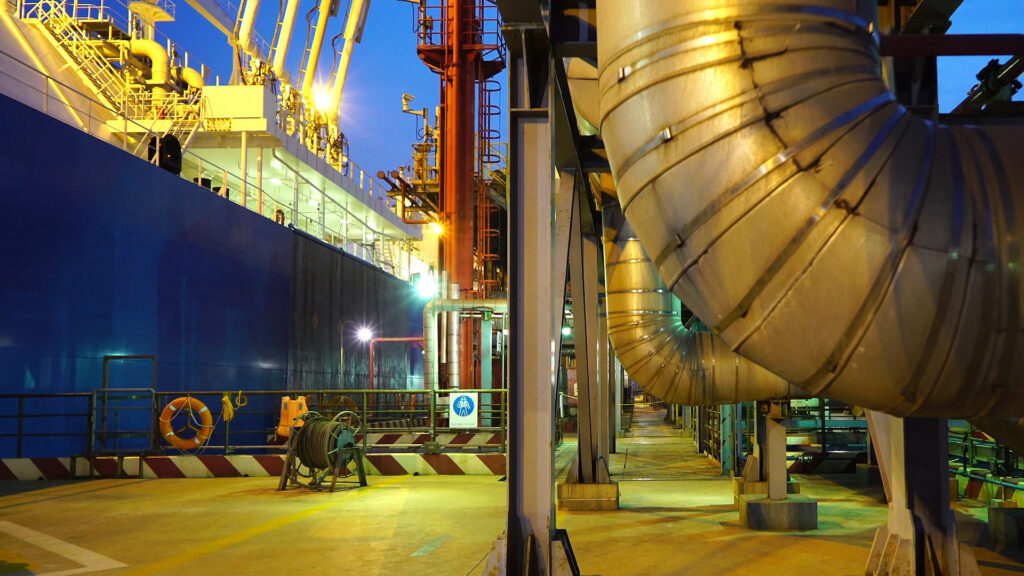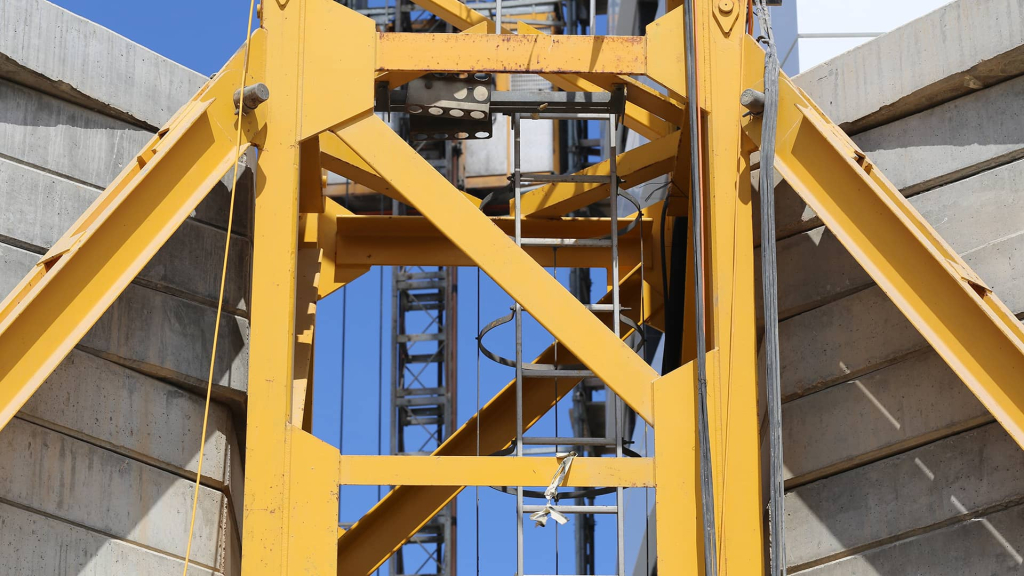
COP28: The failure to reach an Article 6 decision and the Inconvenient truth
COP28 saw qualified success in the global stocktake. The price of the COP presidency’s focus on the global stocktake came at the cost of the lack of progress in respect of the two Article 6 market mechanisms of Cooperative Approaches and the Article 6.4 Mechanism. No decisions were reached on either which would have supported the advancement and development of project activity delivering much needed carbon finance from the Global North to the Global South.
Instead of facilitating mechanisms to allow the lowest cost of abatement being made accessible to countries with ambitious nationally determined contributions (NDCs), the lack of progress on Article 6 sent confusing signals about the role of market mechanisms under the Paris Agreement. Given the EU’s historic support for market mechanisms, their role in obstructing this progress was confusing to many.
As we describe in this report, the EU’s position is very much explained by their policy stance reflected by the Carbon Border Adjustments Mechanism and their aim to incentivise financial support for removal solutions that are based on geological storage. The EU is, of course, entitled to adopt the climate policies that most suit its situation. The question is, should they be given the right to force other Paris Agreement Parties to abandon their own policies, such as the Article 4 right under the Paris Agreement for developing countries to have NDCs that are consistent with the principle of common but differentiated responsibilities and respective capabilities, in light of different national circumstances? Or is Article 4 of the Paris Agreement, to the EU, just an inconvenient truth?
Introduction
The 28th meeting of the Conference of the Parties (COP28) to the United Nations Framework Convention on Climate Change (UNFCCC) was also the forum for the 5th Conference of the parties serving as the meeting of the parties to the Paris Agreement (CMA 5). The priority of CMA 5 was the global stocktake under the Paris Agreement to assess the collective progress of the parties of the Paris Agreement (Paris Agreement Parties) in achieving the main objectives of the Paris Agreement. CMA 5 was important because, the global stocktake would provide an indication of the level of increased ambition required of Paris Agreement Parties and, deliver the necessary signal for them in time to consider the updates to their respective NDCs ahead of 2025. Another objective of CMA 5 was the further operationalisation of the market mechanisms under Article 6 of the Paris Agreement, especially the Article 6.4 mechanism (Art 6.4 Mechanism) which will be centrally operated by the Article 6.4 supervisory body (the Art 6.4 Supervisory Body).
Following the end of COP28, it is a widely accepted observation, that the Presidency of COP28 prioritised an outcome in respect of the global stocktake over the achievement of a positive outcome in respect of Article 6. No decisions at CMA 5 were reached in respect of Article 6.2, dealing with cooperative approaches ( Cooperative Approaches) or the Art6.4 Mechanism, meaning that the further operationalisation of these two mechanisms delays their potential to support the transfer of carbon finance from the Global North to the Global South. In particular, the failure to reach any CMA decision leaves the Art6.4 Mechanism in limbo and delays progress in any development of mitigation outcome activities under that mechanism by (at least) a year.
So what were the issues that prevented the Paris Agreement Parties from reaching an agreement on the two Article 6 mechanisms? The purpose of this paper is to explore those issues.
So what prevented an Article 6 decision at COP28?
The issues that caused a failure to reach a CMA decision in respect of Cooperative Approaches were different from those that prevented a decision on the Art6.4 Mechanism. Although on the face of it, there were far fewer issues with the Art6.4 Mechanism but, as these decisions were considered together by certain negotiators, the result was that with no scope of an agreement on Cooperative Approaches, the Art6.4 Mechanism became a hostage to fortune. Other than the issues involving authorisation and revocation of authorisations, the issues between Cooperative Approaches and the Art6.4 Mechanism did not overlap, so it was not necessary for the two decisions to be considered together. However, as it materialised, there appear to be political and tactical reasons for considering the two decisions together.
Cooperative Approaches
The list below illustrates the key points of contention between the negotiators on Cooperative Approaches, and our brief commentary on those points.
| Point on contention on Cooperative Approaches | Commentary |
|---|---|
| The definition of a Cooperative Approach, specifically, whether a Cooperative Approach could arise through a mere unilateral process of the host country authorizing the use of ITMOs as opposed to a bilateral or multilateral process. | It is quite astounding that something as fundamental as whether a Cooperative Approach can be declared by a single Paris Agreement Party, without mutual agreement of another Paris Agreement Party, should be the subject of disagreement. The issue goes to the heart of what a Cooperative Approach is about. The fact that some parties were pushing an interpretation of a unilateral Article 6.2 demonstrates how the lessons learnt from a disastrous Track 1 Joint Implementation (JI) under Article 6 of the Kyoto Protocol have been forgotten. The EU clearly had not forgotten and the parties pushing for it did not participate in Track 1 JI and therefore, had no experience of it to draw upon. The impact of having no CMA decision on something as fundamental as this is that anyone relying on a unilateral Article 6.2 arrangement takes on a significant risk as to whether the units will qualify as ITMOs. |
| Whether secondary trading in ITMOs (i.e. acquisition by Paris Agreement Parties for use of ITMOs towards their NDCs without participating in a bilateral or multilateral Cooperative Approaches), should be permitted? | The confusion around whether secondary use of ITMOs is restricted or permitted again demonstrates a lack of consensus (and potentially, understanding) around the purpose of a Cooperative Approach. The use of ITMOs carries a number of obligations for the participating countries in a Cooperative Approach, especially for the host country, under the Article 6 rulebook (for example, to ensure that a Corresponding Adjustment is carried out). These challenges can be mitigated in a bilateral or multilateral Cooperative Approach. Host countries have no such scope of mitigation where it has no idea which Paris Agreement Party is using its ITMO, as would be the case in a market involving the secondary trading of ITMOs, especially those that are issued on a unilateral basis. However, there are ways in which limited secondary trading of ITMOs can be achieved in a manner that is not prejudicial to a host party within the Article 6 rulebook. |
| Disagreement about use authorisations of ITMOs, including the timing and procedure of authorisation, whether there should be minimum requirements in an authorisation. Whether Paris Agreement Parties should be able to revoke use authorisations of ITMOs and, if so, under what circumstances such revocation should be allowed. | Fundamental to this debate is whether Cooperative Approaches are required to mirror the Art6.4 Mechanism which has a more prescriptive authorisation regime. The short answer is that Cooperative Approaches exist as an alternative for participating Paris Agreement Parties to design as they feel appropriate within the scope of the Art 6.2 rulebook. This is consistent with the bottom-up ethos of the Paris Agreement. However, this freedom presupposes that the authorisation framework is subject to the basic checks and balances that any buying country, participating in a Cooperative Approach, would insist on. For example, that a host country could not unilaterally revoke an authorisation simply so that it could sell the ITMOs to another country with whom the host country also has a Cooperative Approach. Once again, this is yet another reason not to accept ITMOs issued pursuant to unilateral Art 6.2 arrangements, as they lack any checks and balances. |
| Lack of consensus about whether an ITMO can be used (or if any adverse consequences should result) if there is a material inconsistency in the annual reporting of the relevant Paris Agreement Parties participating in a Cooperative Approach. | The Kyoto Protocol had provided a mechanism to restrict the activities of an Annex A country seeking to buy or sell Kyoto units where that country failed to maintain its eligibility criteria, including if it had failed to comply with its Kyoto reporting requirements. The role of the Enforcement Committee was to ensure that Annex A country remedied its reporting errors before it was allowed to continue to participate in the Kyoto Protocol market mechanisms. The Paris Agreement Article 6 rulebook eligibility requirements, in contrast, do not include such a reporting requirement and the annual reporting requirement is merely about information sharing. Where such discrepancies arise, the Paris Agreement does not provide any equivalent to the Enforcement Committee as per the Kyoto Protocol. This is consistent with the move away from top-down control under the Kyoto Protocol to a bottom-up approach adopted in the Paris Agreement. The negotiators pushing for this appear to be trying to recreate a top-down solution that was abandoned when the Paris Agreement was agreed. |
Art6.4 Mechanism
The issues that prevented an Article 6.4 decision appear to be more political, and quite specific to the EU’s policy position on removals. The Art 6.4 Supervisory Board had spent most of 2023 negotiating and agreeing recommendations on: (i) requirements for methodologies 1 (the Methodologies Recommendations); and (ii) requirements for removals (the Removals Recommendations)2. Given the highly technical elements of these recommendations, it was expected that the CMA would adopt the body’s recommendations without too much objection. However, despite the EU seemingly being an active participant in the negotiations leading to and agreeing these recommendations made by the Art 6.4 Supervisory Board, the EU objected to the Removal Recommendation when it was presented to the CMA for consideration. This was so even though the EU was willing to accept the Methodologies Recommendations. The EU’s reasons for not supporting the Removals Recommendations have been debated since the end of COP28 but, at the heart of it, its motives appear to stem from the misalignment between the Removals Recommendations and the EU’s own certification framework for carbon removals (the CRCF).3
As the CRCF proposal highlights, for the EU to achieve its net-zero targets by 2050 and to achieve negative emissions thereafter, the EU needs to increase the uptake of carbon removal activities and therefore, for the CRCF to create a voluntary mechanism to incentivise investments into removals within the EU.
The EU’s 2030 targets, as delivered through its legislative package called the ‘EU Green Deal’, specifically adopts a ‘stick’ rather than a ‘carrot’ approach by adopting new and more severe regulations for GHG emissions within the EU. This is seen in the progressive withdrawal of free allocation of EU allowances ( EUAs) to sectors covered by the EU emissions trading scheme (EU ETS) and the steeper decline in the available EUAs within that cap. New regulations include the adoption of the new EU ETS 24 and, perhaps most significantly, the Carbon Border Adjustment Mechanism (CBAM). However, as the EU starts to consider its next legislative environmental agenda beyond 2030, it recognises that, by 2050, it will need to rely on removals to offset the GHG emissions that it hasn’t been able to abate through the EU ETS, EU ETS 2 or other initiatives such as the EU farming initiative, including those in hard to abate sectors such as domestic aviation and shipping. It envisages a world where a removal unit necessarily becomes a compliance unit within one or more of its emissions trading schemes. In essence, if you have emitted, you will need to buy an eligible removal credit to avoid a penalty.
By 2040, the availability of new EUAs may end and with a tighter cap, prices are likely to rise. As supply of EUAs approach zero, the EU ETS will have to adapt or even cease. The inclusion of removals will therefore be “driven by these pressures rather than whether the policy is a first best solution to financing the net negative economy.”5 A recent paper funded by, among others, the Grantham Foundation for the Protection of the Environment and the German Federal Ministry of Education and Research, concluded that “only CDR that stores carbon for ten thousand years or more might be considered fungible with compliance market allowances”.6
As such, the EU recognises that the permanence of the removal is a vital issue for its confidence in using removals in its EU ETS to offset those GHG emissions it hasn’t been able to reduce through its various policy measures. The CRCF also draws a conscious and qualitative distinction between removals that are based on carbon farming 7 and carbon storage products8 on the one hand and removals that are based on the storage of carbon in geological formations on the other. The distinction relates to the greater risk of reversal in the former category which then, according to the CRCF, dictate a shorter validity period for a removal certificate generated by such activities. The CRCF considers permanent carbon storage as being the storage of carbon for several centuries expressly referencing bioenergy with carbon capture and storage (BECCS) and direct air carbon capture and storage (DACCS).
In short, under the CRCF, carbon removals units ( EU CRUs) generated through afforestation or reforestation (ARR) or biochar, will have a shorter validity period than those for BECCS and DACCS. This qualitative differentiation will therefore (arguably) lead to different valuations placed on EU CRUs which are deemed less permanent. The CRCF appears to be directed at encouraging greater investment in BECCS and DACCs than in other less permanent removals such as ARR or biochar.
This qualitative and value-based distinction does not exist in the Removal Recommendations presented to the CMA by the Supervisory Board, potentially leading to a significant price differential between: (1) an EU CRU that meets the EU ETS qualitative criteria; and (2) an Article 6.4 Emission Reduction ( Art6.4 ER) generated using a removal methodology. Further, in an information note produced by the Article 6.4 Secretariat to facilitate the Supervisory Body’s consideration of the recommendations on removal activities9, in weighing up the pros and cons of engineering based removals compared to nature based removals, the note highlighted that one of the cons of engineering based removals was that “these activities do not contribute to sustainable development, are not suitable for implementation in the developing countries and do not contribute to reducing the global mitigation costs, and therefore do not serve any of the objectives of the Article 6.4 mechanism.” In the context of the length of permanence that needs to be associated with removals and a different cost that should therefore be applied to support geological storage over land-based removals by the Art6.4 Mechanism, the same information note states: “[t]he argument of expensive production of credits is an issue that needs perhaps to be posed elsewhere and not in the context of a market mechanism, since a market mechanism by its very nature is about leveraging low-cost mitigation opportunities and not about guaranteeing a price that is commensurate with the cost of production.”
The statement highlights a key difference of views regarding the purpose of removals in the context of the Art6.4 Mechanism and the position taken by the EU on which removal type is compatible with its EU ETS. The EU is looking to create an incentive, that is based on the length of the permanence of the removal, to drive greater investment into BECCS and DACCS. In contrast, the Removals Recommendation and the materials which led to its drafting suggests that the role of the Art6.4 Mechanism is to enable low-cost mitigation solutions to be pursued. In the context of many of the selling Article 6 countries, this would attract capital to land-based removals in those countries. In simple terms, the EU wishes to push up the price of removals to fund BECCS and DACCS whilst the Art 6.4 Supervisory Board sees geological storage removals being a rich country’s indulgence and therefore, is focussing on nature-based removals. The disparity in price between geological removals and other, conceptually, less temporary removals is the point of tension.
Although more than one negotiating party can and should bear the blame for the failure of the Article 6 decisions, it was widely reported that the positions adopted by the EU were fundamental to this failure 10. This raises the question as to why the EU, the historic bastion of carbon pricing and the designer of the (now) successful EU ETS, should adopt a position that prevents the operationalisation of Article 6?
Does the EU support Article 6 as a market mechanism?
The official answer to this question is “yes”, but is this supported by its conduct?
The EU Commission describes CBAM as a “landmark tool to put a fair price on the carbon emitted during the production of carbon intensive goods that are entering the EU, and to encourage cleaner industrial production in non-EU countries.”11 This price, requires importers of certain goods from outside the EU to surrender a number of CBAM certificates, whose price is determined by the EUA price at the time of import of certain goods, equal to the amount of direct and indirect GHGs associated with their production. The goods initially covered by the scope of CBAM include cement, iron and steel, aluminium, fertilisers, electricity and hydrogen – selected because of their carbon intensive qualities but mostly because of their alignment with those EU industries most at risk from carbon leakage. As the EU Commissions states: “Carbon leakage occurs when companies based in the EU move carbon-intensive production abroad to countries where less stringent climate policies are in place than in the EU, or when EU products get replaced by more carbon-intensive imports.”12 However, the list of covered goods is expected to increase and, with advances in GHG information and data sharing capability, more complex products are also likely to be included within the scope of CBAM in the future.
Historically, the EU has protected EU producers covered by the scope of the EU ETS and at risk of carbon leakage, by giving them free allocation of EUAs. However, continuing free allocation doesn’t facilitate the EU’s 2030 emission targets and is not supportive of a 2050 net zero target. Therefore, the timing of progressive implementation of CBAM has been aligned to coincide with the progressive phase out of allocation of free EUAs to these sectors. With the removal of free EUAs, the cost to these EU industries will increase and make them less competitive internationally – so CBAM is seen as the tool to level the playing field and reduce the political risk EU governments will face from their industries and citizens becoming angry at having to foot the bill for their increased costs for these goods. In turn, countries exporting to the EU are told that the amount they pay for CBAM certificates can be reduced by the domestic carbon price adopted by those countries for those goods. In short, exporting countries can avoid paying carbon taxes imposed on their goods by the EU by taxing their own citizens. Thus, the higher the level of that domestic carbon price, the less tax leakage to the EU.
The EU is on record as saying that it does not intend to use Article 6 credits towards meeting its collective member state NDCs. The EU’s commitment to domestic decarbonisation is therefore inconsistent with an idea that GHG emissions within the EU should be allowed to be offset rather than decarbonised. This means that the EU companies and citizens will bear the higher cost of the EU’s decarbonisation for meeting their 2030 goals than the cost of equivalent GHG reductions achieved in the Global South. Further, by the EU not relying on Article 6, the Global South is consequentially deprived of the benefit of the transfer of climate finance that might have happened from the EU via the Article 6 market mechanisms. In fairness, neither the United Kingdom nor the United States have said they will use Article 6 units towards meeting their NDCs but they were not the parties obstructing progress of Article 6 at COP28. So, if the EU isn’t planning to use or rely on Article 6, which is entirely within its prerogative, why obstruct the progress of these two mechanisms at COP28?
The answer to this lies in the inconvenient truth that some fundamental elements of the Paris Agreement are inconsistent with CBAM. The principle of ‘common but differentiated responsibilities and respective capabilities, in light of different national circumstances’ ( CBDR) is enshrined in Article 4(3) of the Paris Agreement. The thrust of the CBDR principle is that, as developed countries have produced the majority of the store of historical and current global GHG emissions, and the developing countries have priorities to develop to meet their social and economic needs, the responsibility to be taken or commitments required by international treaty instruments, such as the Paris Agreement, for the limitation of future GHG emissions should be varied between developed and developing countries. It is this concept that enables Paris Agreement countries to adopt NDCs according to which they peak their GHG emissions at different speeds and carry out reductions thereafter. This means, for example, if the EU’s GHG emissions were to peak by 2030, India’s GHG emissions need not peak at the same time. Similarly, the respective efforts in reducing GHG emissions, need not to be identical between developed and developing countries. As such, developing country NDCs will not be the same as those of developed countries and need not cover all gases or all sectors of their economy leading to elements of mitigation activity that sits within their NDC as well as outside their NDC. But how does this sit with the notion of net zero by 2050?
It is worth noting that the Paris Agreement contemplates holding the global average temperature increase to no more than 2°C and expresses a willingness to pursue efforts to limit the increase to 1.5°C (the Below 2°C Target). Article 2 of the Paris Agreement does not make the target legally binding, but it reflects the level of ambition on which the Paris Agreement rests. There is therefore a difference between the Below 2°C Target of the Paris Agreement and the 2050 net zero target adopted by corporates within their ESG or sustainability plans (the 2050 Net-Zero Target) which is not based on the Article 2 commitment of the Paris Agreement but on the IPCC’s Special Report on Global Warming of 1.5°C in 2018 (IPCC SR15). The very purpose of such voluntary corporate targets is to take on the 2050 Net-Zero Target to make up for the difference between government action under the Paris Agreement and the action required by the IPCC SR15 report. In the minds of the average market participant, there is little distinction between the Below 2°C Target of the Paris Agreement and the 2050 Net Zero Target but these differences do become material when considering the politics of international climate negotiations, such as at COP28. This is because the CBDR principle applies at Paris Agreement country level but not at the level of voluntary corporate commitment.
At Paris Agreement level, a tension nonetheless exists between those developed countries that have adopted a Below 2°C Target that is equal to the 2050 Net-Zero Target (such as the EU) and those countries that, because of CBDR, maintain the Below 2°C Target which, as highlighted, is not a binding Paris Agreement target. This tension was expressly visible during the COP28 negotiations.
For some developed countries like Japan, Singapore and Switzerland, the Article 6 mechanisms are a cost-effective way to both raise ambition in respect of those country NDCs as well as a means to funding decarbonisation in those host countries with whom they are negotiating Cooperative Approaches or, where the Art6.4 Mechanism supplies Art6.4 ERs, from those host countries of emission reduction or removal activities. Although the EU has chosen not to use Article 6 itself, the use by other countries of the Article 6 means that those countries are not paying as much as the EU for achieving their respective NDCs and the countries who are supplying the ITMOs or Art6.4ERs are benefiting from the funding to support their domestic decarbonisation without having to adopt a carbon price or, where they have adopted a carbon price, to keep the source of the emission reduction or removal from outside the scope of that carbon price tool, whether an emission trading system or a carbon tax regime.
In short, from the EU’s perspective, carbon finance through Article 6 (and equally via the voluntary carbon markets) may deter or delay the adoption by the host country of a domestic carbon price that would otherwise charge the host country’s cost of decarbonisation to their citizens. However, as discussed above, CBDR allows for developing countries to defer or delay the point where their emissions peak or when their NDC ambitions must match those of the EU. In short, the cost of decarbonisation in those countries should not be and need not be the same as the cost of decarbonisation in the EU. This is where the EU’s climate policy, particularly CBAM, clashes with Article 6.2 and, in particular, CBDR.
By asking importers of goods from countries outside the EU, without reference to CBDR, to pay the equivalent of the EUA price for the imbedded emissions of their goods, CBAM is effectively a tool for exporting the EUA price as a global carbon price. The Norwegian foreign minister Espen Barth Eide was recently quoted at the World Economic Forum in Davos as saying “The best outcome of the CBAM story is that you don’t actually need to introduce it because you have inspired other countries to put the price at home..”13 Europe is therefore conscious of the consequences of its actions. As the EU Commission states “The CBAM is designed to be compatible with WTO-rules”14 which is why it cannot afford to discriminate how it applies CBAM to third countries. Yet, CBDR is exactly that, a treatment of developing countries and their Paris Agreement goals, differently from those of the developed countries. The EU has made a cold calculation – CBAM is more likely to be challenged under the World Trade Organisation (WTO) rules for which it needs its defence of non-discriminatory treatment, than will be challenged under the Paris Agreement. Recognition of the CBDR principle under the Paris Agreement is an inconvenience that the EU cannot afford if CBAM is to succeed.
Therefore, by forcing the developing countries that export goods to the EU to choose between paying the EU’s CBAM cost or taxing their own citizens and industries, the EU is calculating that the developing countries will choose the latter rather than challenge the EU under the Paris Agreement for its position under CBAM. To further encourage the faster adoption of a domestic carbon price, cutting off sources of climate finance via Article 6 and the voluntary carbon markets ( VCM), for example, by destroying demand of VCM units from the private sector, is key. After all, the timing of the phase out of EUAs has already been set in motion with a 2050 Net-Zero Target in mind but the EU cannot directly control the degree of ambition that that a developing country adopts in its NDCs. However, the obligation in the Paris Agreement to increase a country’s NDC ambition is binding, even if the promise of climate finance via Article 6 or the VCM is not.
The above policy position is mostly applicable to the EU’s stance on Cooperative Approaches. For the Art6.4 Mechanism, its issues are different albeit also aimed at dictating where capital allocation should occur. If private sector investments for ITMOs or Art6.4 ERs is directed at nature-based removals rather than geological storage removals, then the EU’s attempt to attract capital under the CRCF may be impeded. Given that the CRCF is voluntary in nature, it is competing for private capital allocation the same way Art6.4 ERs from removal activities, which will be ostensibly cheaper, are. What better way to give the EU CRCF an advantage than to block the progress of the Art6.4 Mechanism? So, is the EU anti-markets? No, it’s just against a market mechanism that doesn’t fit well with its own climate agenda.
Conclusion
It is difficult to see how the EU’s position on either Cooperative Approaches or removals under the Art6.4 Mechanism is therefore likely to change between now and COP29 in Azerbaijan. If anything, absent a challenge to the EU’s CBAM legislation, the outcome of forcing other countries to abandon CBDR will continue to drive the EU’s approach to COP negotiations. This was, after all, the same driver that forced the ‘inside NDC’ – ‘outside NDC’ distinction for corresponding adjustment in respect of Article 6 unit transfers to be abandoned at COP26 and the driver, at COP27, for misrepresenting that an Art6.4ER, without authorisation for use for Paris Agreement purposes, can only be used for making mitigation contribution claims. COP28 is where the EU finally abandoned its pretence that it supports market mechanisms that channel climate finance from the Global North to the Global South, whether via Article 6 or via the VCM. The problem with the EU’s attempt to railroad the rest of the Paris Agreement Parties to accept its climate and economic policies, is that it obliges developing countries to abandon CBDR with no access to climate finance to support the cost of their energy transition via Article 6.
Footnotes
- ‘Requirements for the development and assessment of Article 6.4 mechanism methodologies’; Version 01.1 A6.4-SB009-A01.
- ‘Activities involving removals under the Article 6.4 mechanism’; Version 01.1 A6.4-SB009-A02.
- ‘Proposal for a Regulation of the European Parliament and of the Council establishing a Union certification framework for carbon removals’; COM(2022) 672 final.
- Directive 2003/87/EC of the European Parliament and of the Council of 13 October 2003 establishing a system for greenhouse gas emission allowance trading within the Union and amending Council Directive 96/61/EC; Chapter IVa.
- CO2RE_Report_CDR_Permanence-FINAL-v7.pdf
- Ibid.
- Carbon removal activity related to land management that results in the increase of carbon storage in living biomass, dead organic matter and soils by enhancing carbon capture and/or reducing the release of carbon to the atmosphere.
- Carbon removal activity related that stores atmospheric and biogenic carbon in longa-lasting products or materials.
- ‘Removal activities under the Article 6.4 mechanism’; Version 01.1; A6.4-SB005-AA-A09.
- ‘EU and US at loggerheads over plans to launch new carbon credit market’, The Financial Times, 14th December 2023.
- Carbon Border Adjustment Mechanism – European Commission (europa.eu).
- Ibid.
- ‘Davos 2024: Best outcome of CBAMs would be a global carbon price -Norway’s foreign minister’; Carbon Pulse, 19 January 2024.
- Carbon Border Adjustment Mechanism – European Commission (europa.eu)
We are committed to using our legal and sector expertise, networks and corporate responsibility initiatives to enable sustainable practices across all of our operations and the industries that we service, and to drive meaningful and lasting change. Visit our dedicated sustainability hub at hfw.com/Sustainability-hub

Download a PDF version of ‘COP28: The failure to reach an Article 6 decision and the Inconvenient truth’












